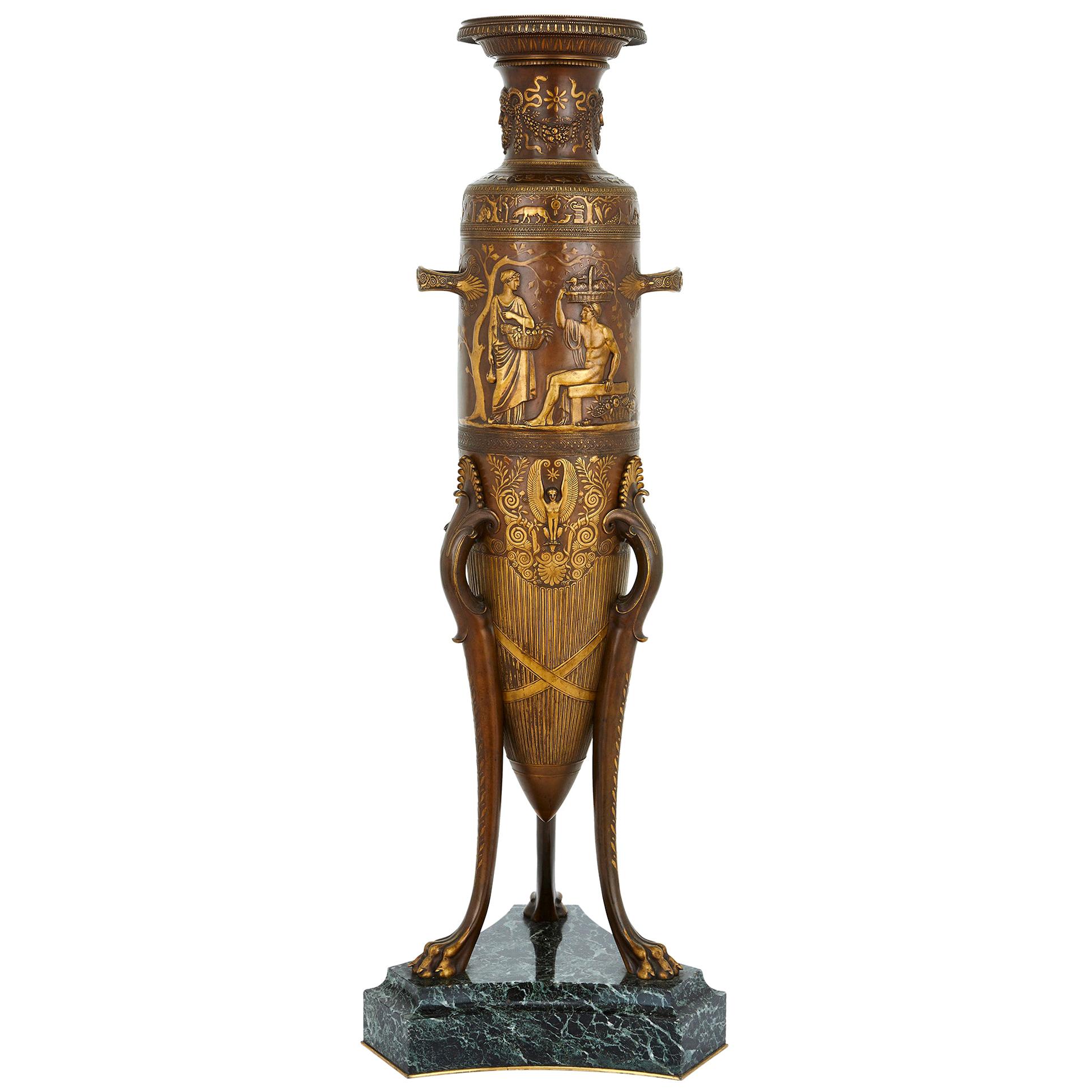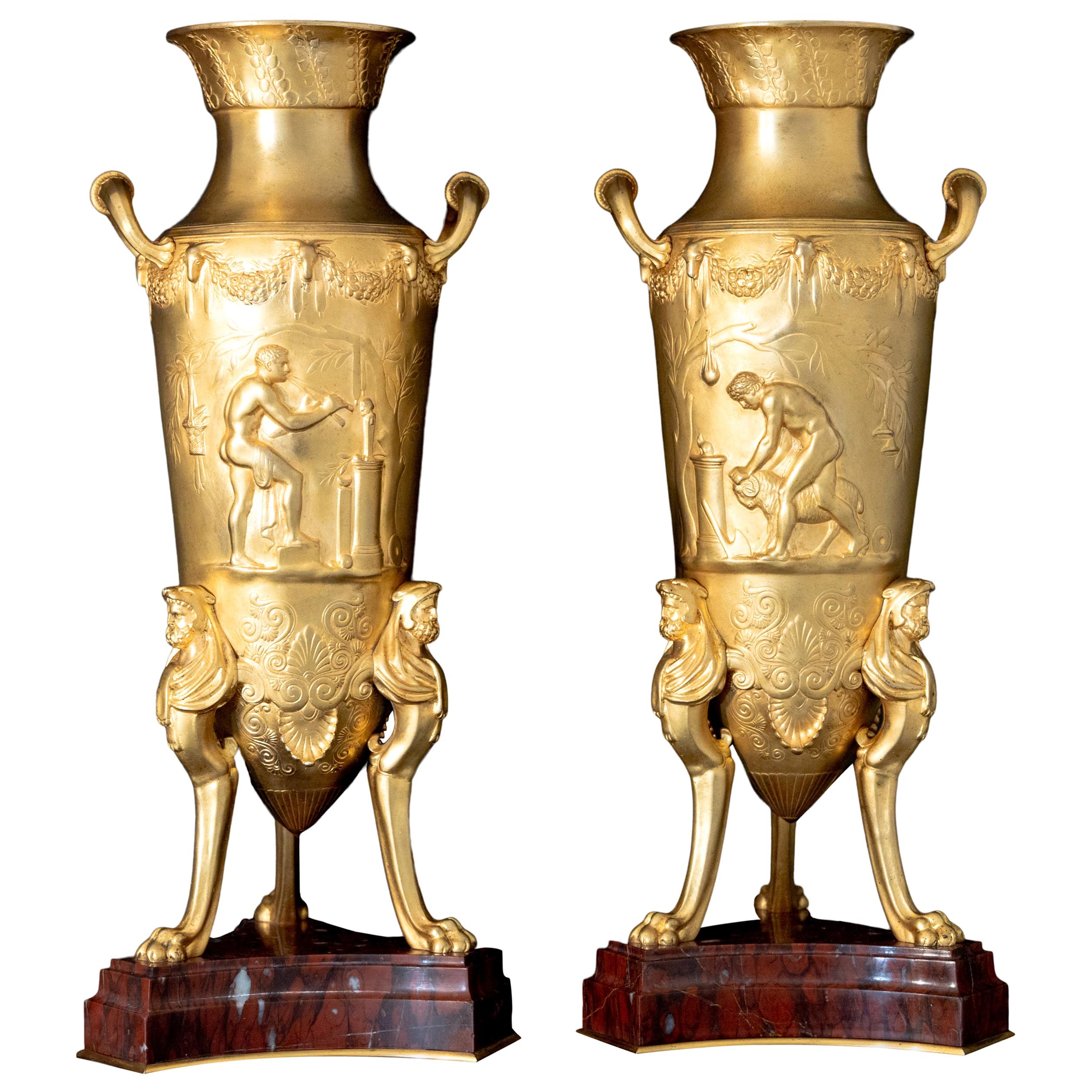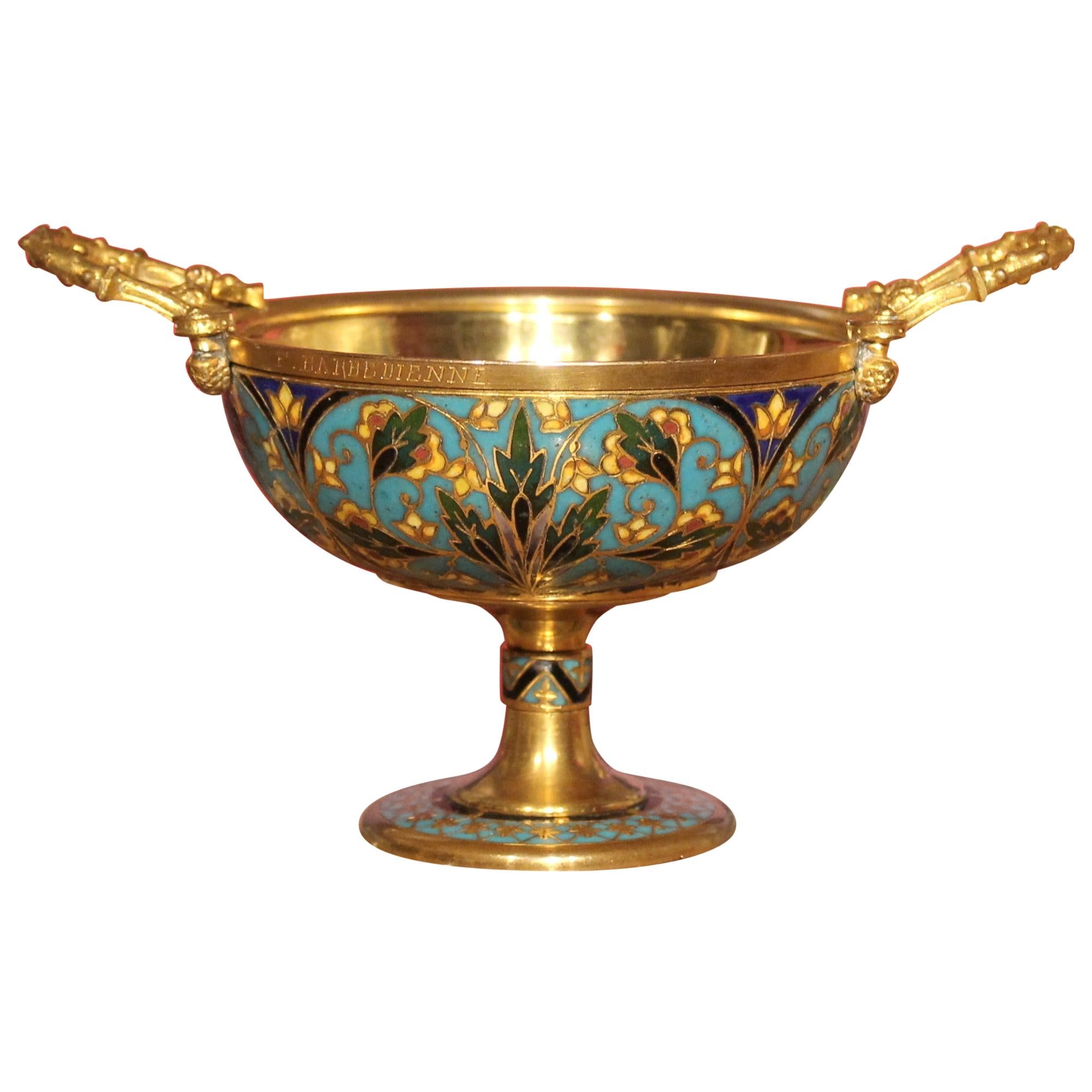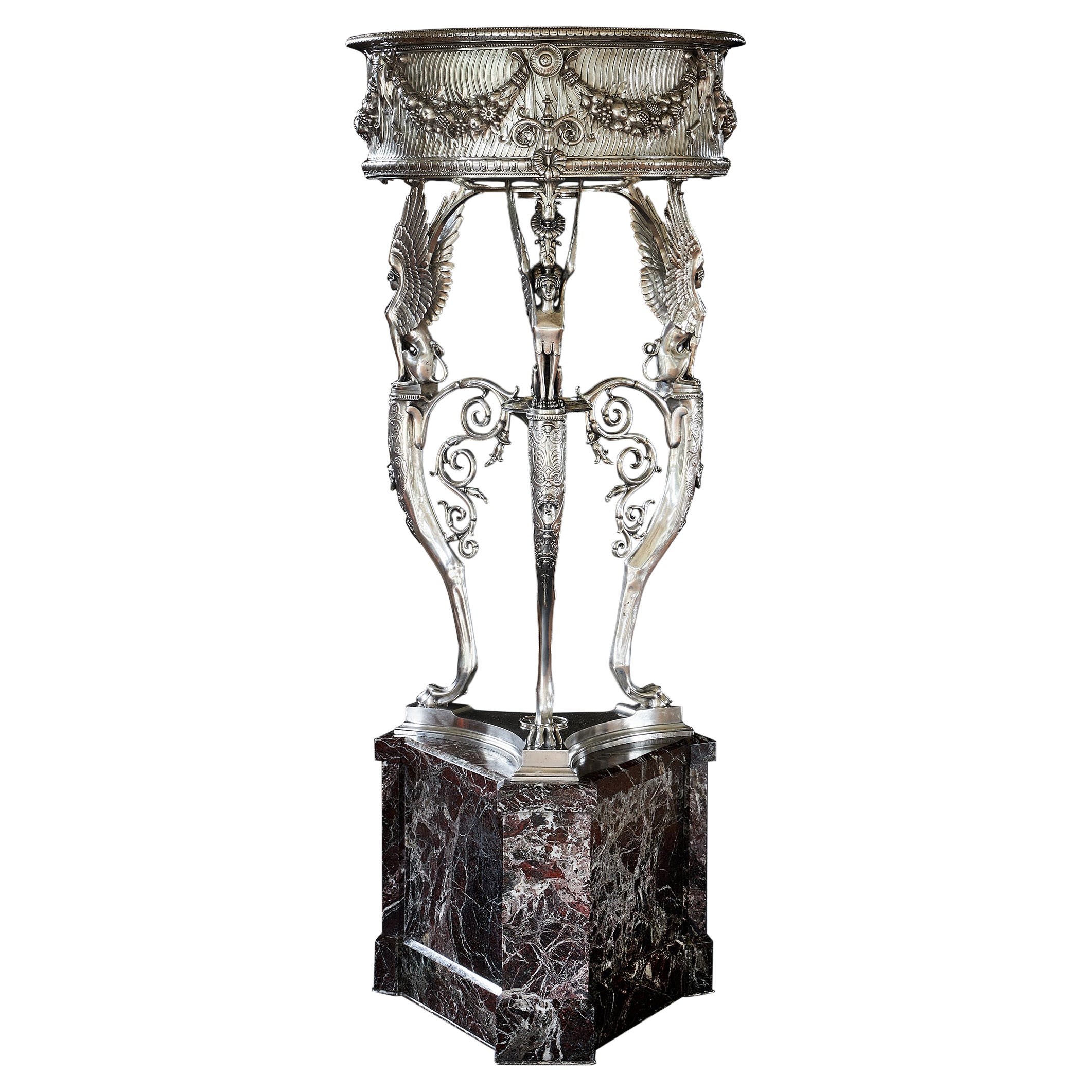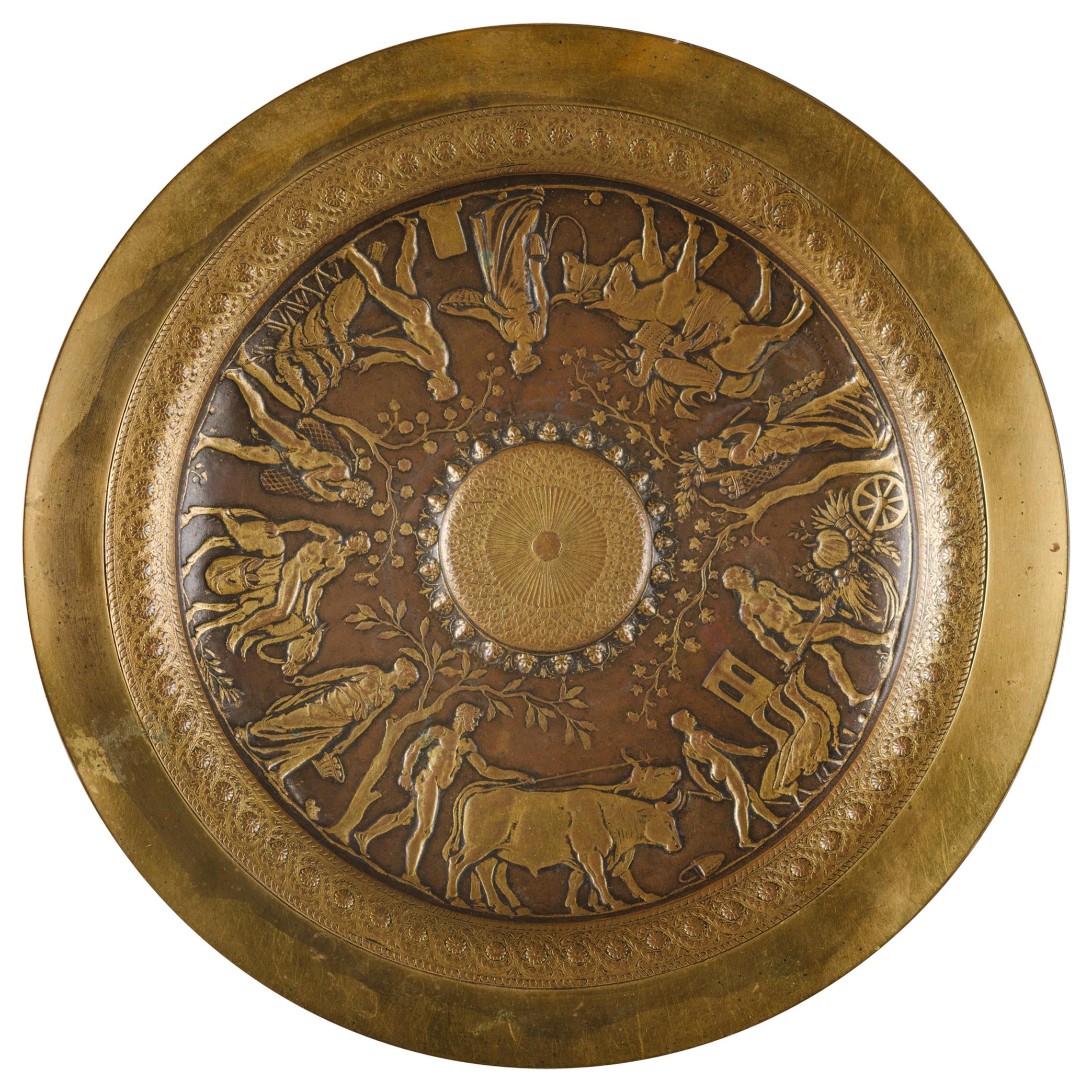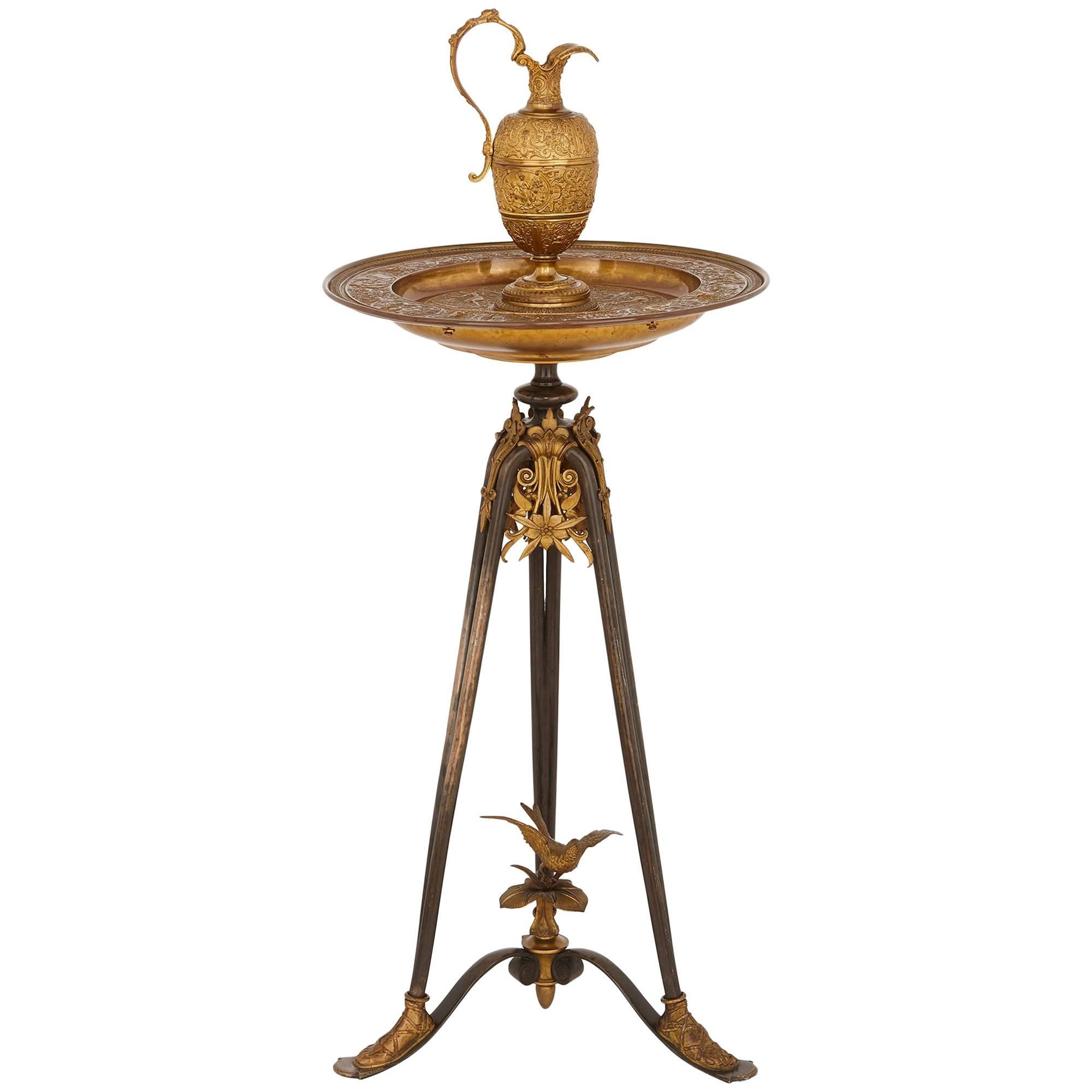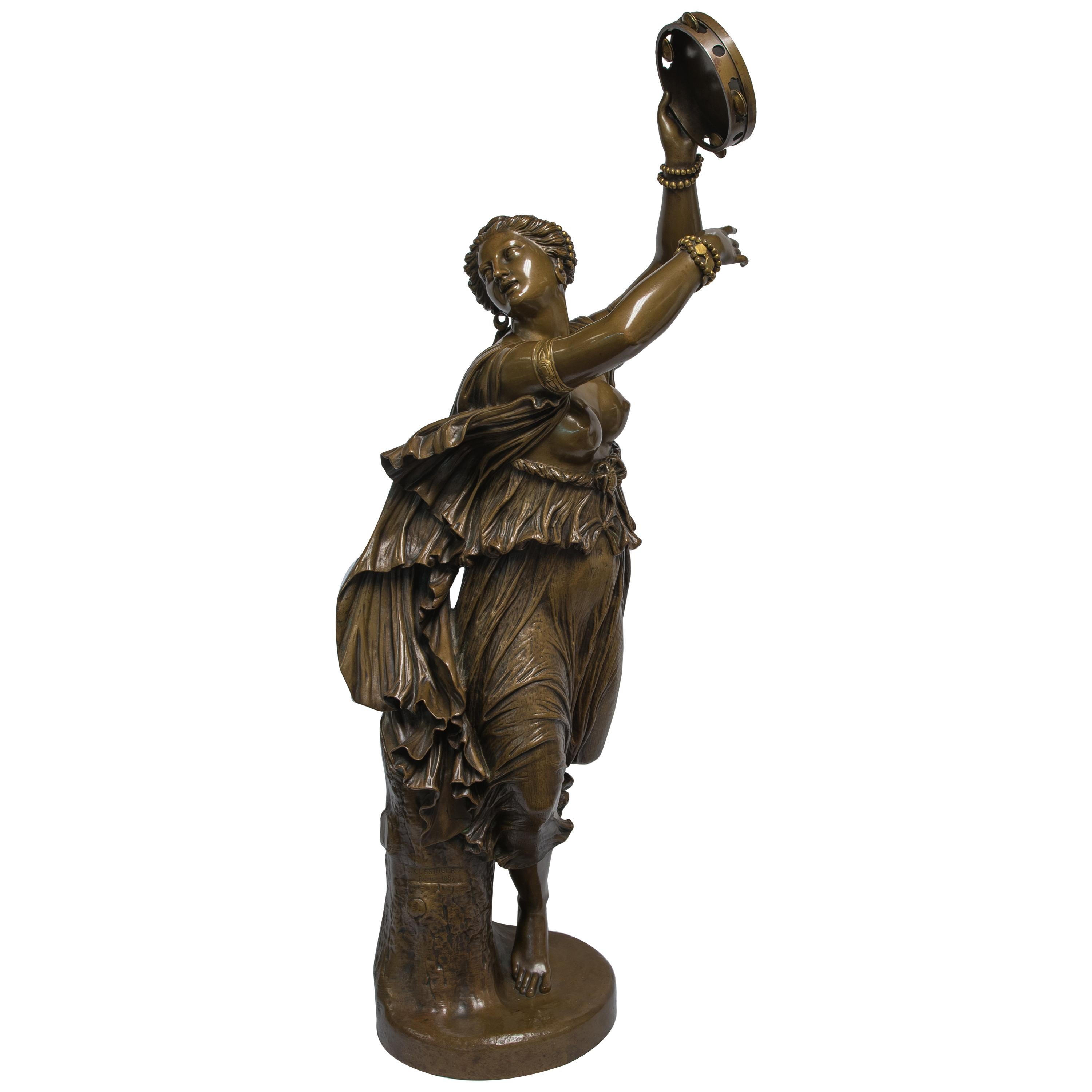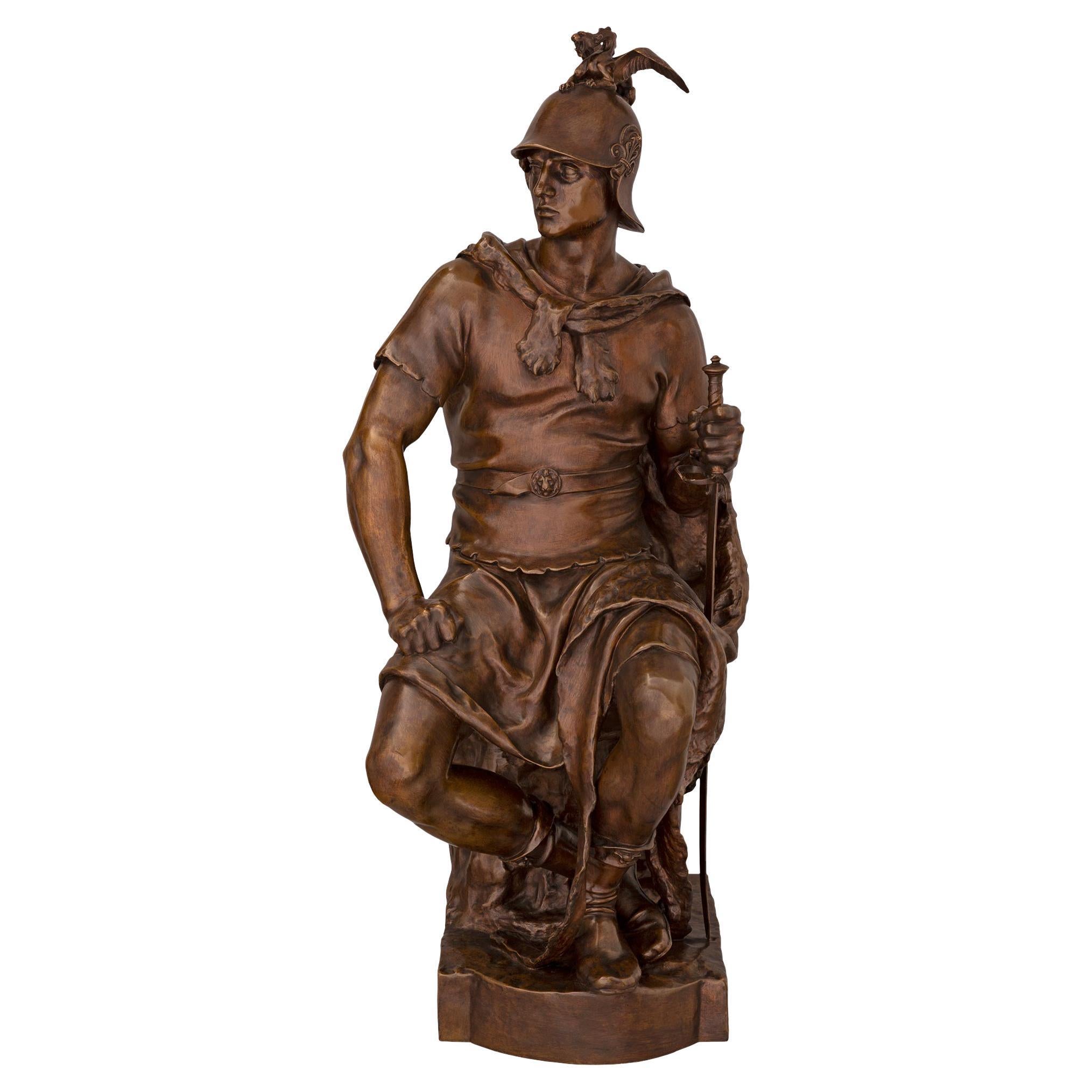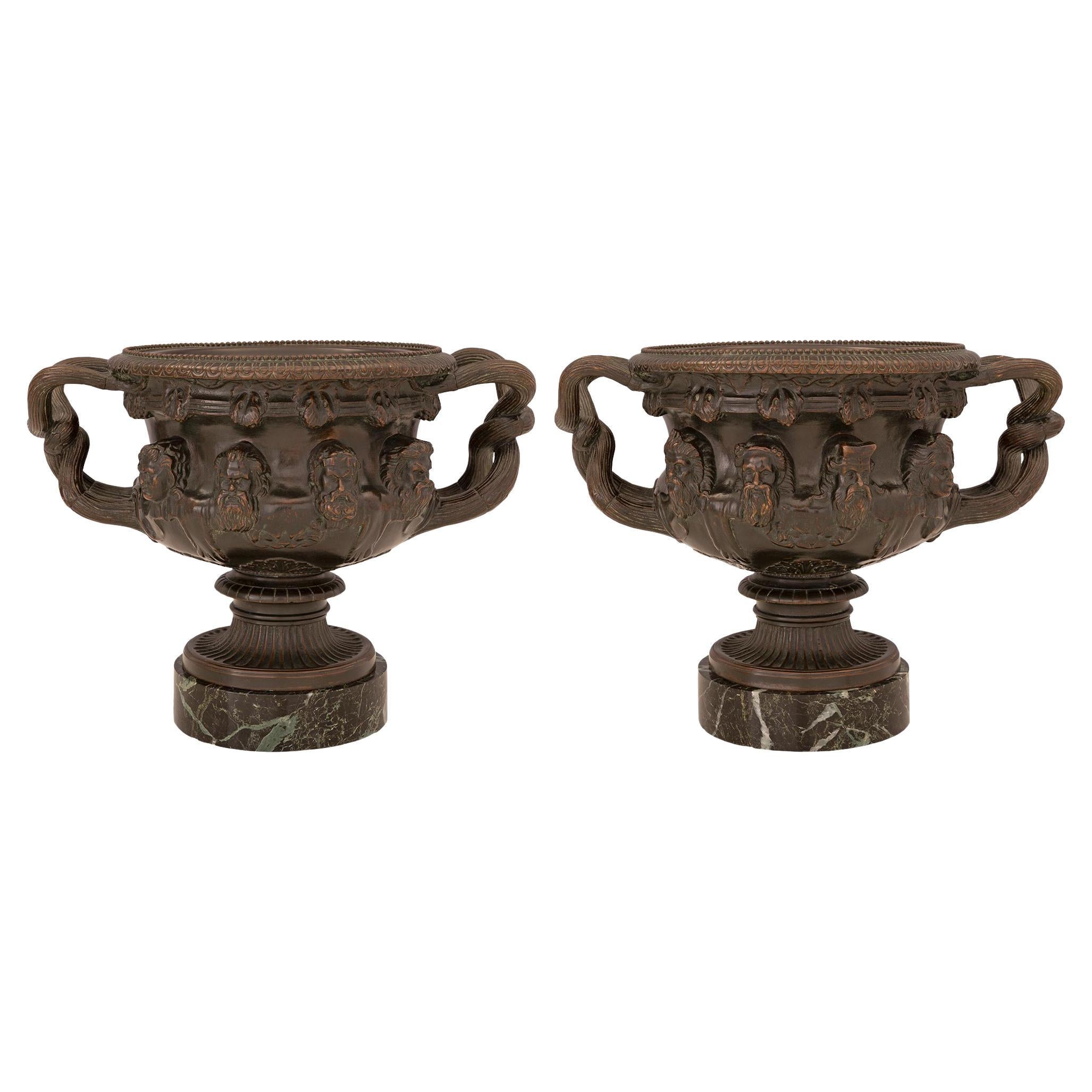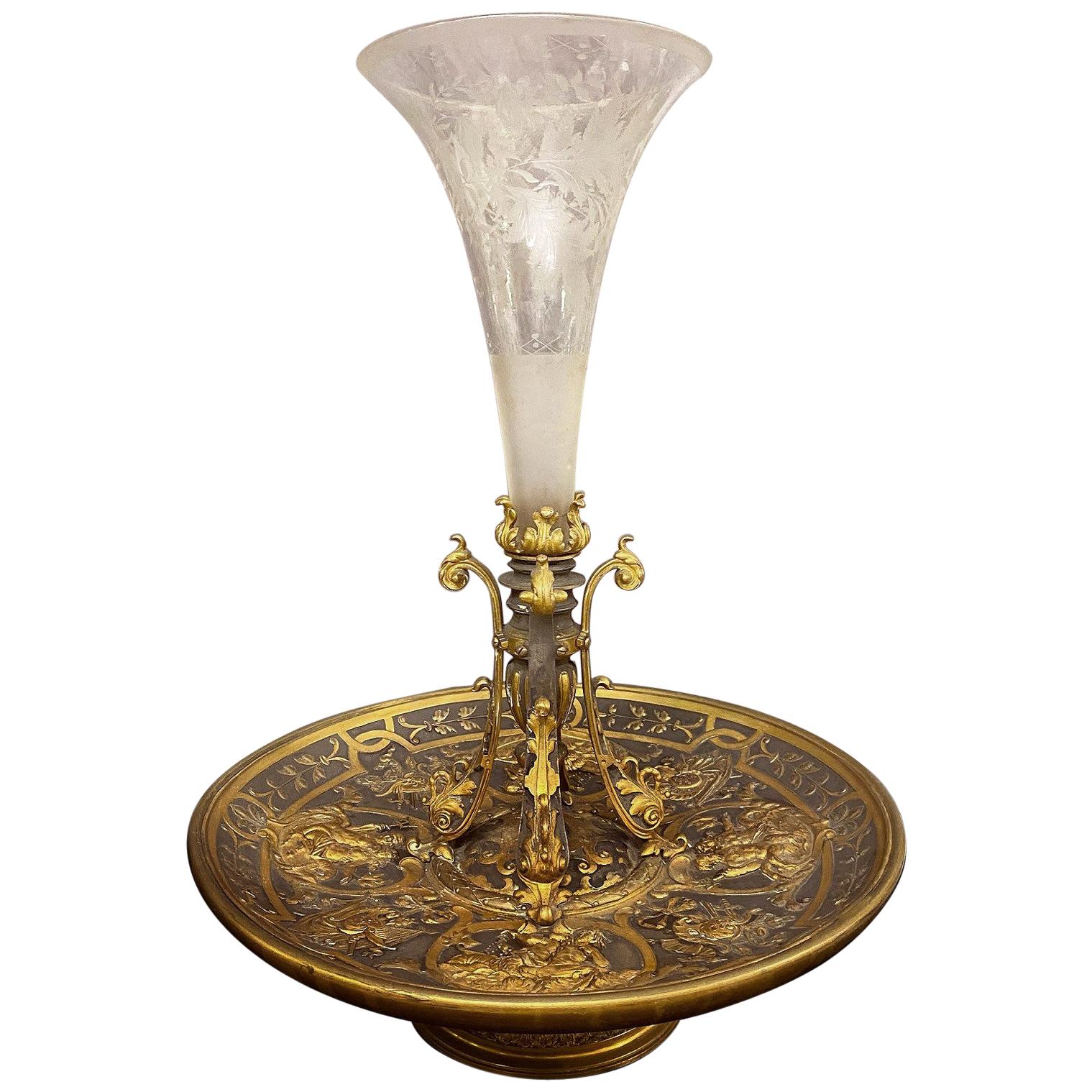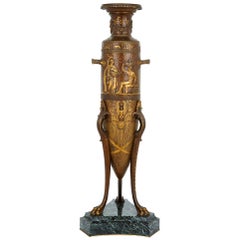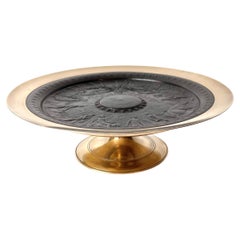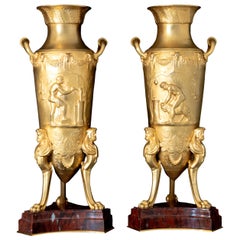
19th Century Tazza Cup in Gilt and Patinated Bronze by Levillain and Barbedienne
View Similar Items
19th Century Tazza Cup in Gilt and Patinated Bronze by Levillain and Barbedienne
About the Item
- Creator:Ferdinand Levillain (Designer),Ferdinand Barbedienne (Manufacturer)
- Dimensions:Height: 3.15 in (8 cm)Diameter: 10.44 in (26.5 cm)
- Style:Napoleon III (Of the Period)
- Materials and Techniques:Bronze,Patinated
- Place of Origin:
- Period:
- Date of Manufacture:1879
- Condition:Wear consistent with age and use.
- Seller Location:PARIS, FR
- Reference Number:Seller: WB-01051stDibs: LU7453232977092
Ferdinand Levillain
Ferdinand Levillain had his debut at the Paris Salon in 1861 and won recognition through the 1860s and 1870s for his work with the highly respected Barbedienne. In 1878, he ceased his collaboration with Barbedienne and triumphed alone at the Exposition Universelle, where he won the gold medal for his work referencing Antiquity. In 1884, Levillain was awarded a first-class medal at the Salon and in 1889, a silver medal at the Exposition Universelle. In 1892, he was recognized with the highly prestigious Légion d'Honneur. Examples of his work are displayed in many museums, including the Musée de Lyon and the Musée d'Art Moderne in Paris. Levillain also collaborated with the Sèvres manufactory and won several medals, which are still visible today at the Louvre Museum and the Musée des Beaux-Arts in Angers.
Ferdinand Barbedienne
Founded by one-time Parisian wallpaper dealer Ferdinand Barbedienne and engineer Achille Collas, one of the most revered foundries in 19th-century France began with the invention of a revolutionary 1830s-era device that could produce proportional reproductions — large or small — of sculptures. Collas’s machine, which yielded miniature likenesses of antiquities for the interiors of homes the world over, was pivotal to the success of the F. Barbedienne Foundry. The successful firm earned prestigious awards and critical acclaim and created exquisite bronze candleholders, clocks and lamps for a range of wealthy and prominent clients.
The duo first launched their company under the name Société Collas et Barbedienne, and early on, they optimized chemical processes for pigmenting and patinating their bronze statuettes. After Collas died in 1859, Barbedienne forged on alone, and the company’s name changed to simply F. Barbedienne.
Barbedienne employed more than 300 workers at that point, and the Maison created a range of furnishings and decorative objects that featured the integration of marble and ormolu accents. However, with the onset of the Franco-Prussian War of 1870, the foundry was forced to retrofit its molds, and the production of cannons replaced sculptures, furniture and vases.
When Ferdinand Barbedienne passed away in 1891, his nephew and heir, Gustave Leblanc, took over as president, changing the name to Leblanc-Barbedienne. Leblanc expanded production into Germany, the United Kingdom and the United States, carrying on the company's legacy with monumental sculptures, and models and securing production rights for famous statues. Paul-Alexandre Dumas, an Art Nouveau maker and student of Louis Majorelle, succeeded Leblanc until the company's closing in 1952.
Barbedienne pieces had been exhibited regularly in the 19th century and were especially prevalent at Europe’s international expositions and world’s fairs, where they received numerous prizes. Today, the Musée d’Orsay in Paris holds dozens of Barbedienne works in its collection, including intricate mirrors, vases and cups created by Louis-Constant Sévin at the foundry. For more than two decades, Sévin created lamps, boxes and more at Maison Barbedienne. Working alongside award-winning chaser Désiré Attarge, Sévin designed Napoleon III-era works that greatly appealed to European nobility.
Other notable artists who collaborated with Barbedienne included Eugene Aizelin, Emmanuel Fremiet, Antonin Mercié, Emile Guillemin, Edouard Lievre, Ferdinand Levillain and Auguste Rodin.
On 1stDibs, find a collection of antique Ferdinand Barbedienne decorative objects, lighting and more.
- Pair of 18th Century China East India Company Porcelain PlatesLocated in PARIS, FRPair of 18th century East India Company famille rose porcelain plates with a polychrome and gilded decor of basket, flowers and bamboos. Minor enamel ...Category
Antique 18th Century Porcelain
MaterialsPorcelain
- 19th Century French Neoclassical Style Bronze Vase by Levillain and BarbedienneBy Ferdinand Levillain, Ferdinand BarbedienneLocated in London, GBThis elegant vase is cast entirely in bronze and it is signed by its makers, the sculptor Ferdinand Levillain (French, 1837-1905) and the master bronzier Ferdinand Barbedienne (Frenc...Category
Antique 19th Century French Neoclassical Vases
MaterialsMarble, Bronze, Ormolu
- Neo-Grec Bronze and Patinated Bronze Tazza by F. Levillain, Cast by BarbedienneBy Ferdinand LevillainLocated in Knivsta, SEA beautiful Neo-Grec Tazza in bronze and patinated bronze, signed by the artist Ferdinand Levillain ( 1837-1905) and cast by the famous Ferdinand Barbedienne (1810-1892). France 1...Category
Antique 1860s French Centerpieces
MaterialsBronze
- Bronze Amphorae, Levillain & Barbedienne, France, Late 19th CenturyBy Ferdinand BarbedienneLocated in Greding, DEPair of fire-gilt bronze amphorae by Ferdinand Levillain (1837-1905) and Ferdinand Barbedienne (1810-1892) on trefoil red marble bases. The vases stand on lion paw feet with Hercules atlases and antique scenes...Category
Antique Late 19th Century French Empire Revival Urns
MaterialsMarble, Bronze
$7,086 Sale Price / set20% Off - F. Barbedienne, 19th Century French Gilt Bronze and Cloisonnè Enamel Tazza CupBy Ferdinand BarbedienneLocated in Firenze, ITThis French 19th Century antique lovely bronze and cloisonnè enamel tazza or cup with handles is an artwork made by Ferdinand Barbedienne (1810–1892). This Napoleon III period little...Category
Antique 19th Century French Napoleon III Decorative Bowls
MaterialsEnamel, Bronze
- Neo-Grec Gilt and Patinated Bronze Tazza, Cast by BarbedienneBy Ferdinand Levillain, Ferdinand BarbedienneLocated in Brighton, West SussexA Neo-Grec gilt and patinated bronze Tazza, designed by Ferdinand Levillain and cast by Ferdinand Barbedienne. Marked 'F. Levillain' to the decoration and stamped 'F. Barbedienne' to the underside. This rare tazza is a fine example of the collaboration between the gifted designer Ferdinand Levillain and the highly acclaimed bronzier Ferdinand Barbedienne. It is decorated with a bas-relief in the 'Neo-Grec' or ‘Pompeian’ style with classical figures herding animals...Category
Antique 19th Century French Neoclassical Revival Decorative Dishes and V...
MaterialsBronze
- 19th Century Silvered Bronze Athénienne Jardinière by Ferdinand BarbedienneBy Ferdinand BarbedienneLocated in Oxfordshire, United KingdomA French silvered-bronze athénienne by Ferdinand Barbedienne, Paris, last quarter 19th century with a revolving liner, the frieze applied with bucrania suspending ribbon-tied berried laurel swags above a border of bellflowers on a stippled ground above three seated female sphinxes issuing stylised foliage and scrolls on lion monopodia cast with the mask of Hercules, scrolling foliage and anthemions joined by stretchers, raised on a concave-sided triform marble base on a further thin silvered-bronze base, inscribed to the tripod base 'F. BARBEDIENNE' Measures: 103.3cm. high, 41.5cm. diameter; 3ft. 4 3/8 in, 1ft. 4 1/4. This impressive athénienne is a key reminder of the longevity of a particular model and design’s success from Antiquity through to the 19th century and up until this day. Typically known as the ‘Trépied du Temple d’Isis’, this athénienne is designed after the Roman antique originally found at Pompeii and now at the Museo Archeologico Nazionale, Naples (fig.1). From being for example an inspiration for the baptismal font of Napoléon’s son in 1811, this model was the inspiration to many highly skilled makers throughout the 19thcentury such as the Manfredini brothers from Milan and of course the Parisian well-established bronze founder Ferdinand Barbedienne who executed the present example. The Temple of Isis was a Roman temple dedicated to the Egyptian goddess Isis and was among one of the first discoveries during the excavation of Pompeii in 1764. Certainly considered as one of the most elegant examples of antique tripods, the existence of this model was then popularized to the rest of Europe via prints, one of the first being by Giovanni Battista Piranesi in 1779. This type of tripod was also popularised by an engraving in C. Percier and P. Fontaine’s, Receuil de Décorations Intérieures of 1801. Interestingly, there is also a watercolour now in the Musée Carnavalet, Paris, showing this type of tripod displayed at the 1801 Exposition des Produits de L’Industrie in the Louvre. The passion for Greek and Roman Art in the 19th century. The discovery of Pompeii and Herculaneum around the middle of the 18th century gave rise to a new passion for Antiquity and the excavated masterpieces renewed the repertoire of fine and decorative arts and served as models for Neoclassicism. Members of the aristocracy as well as connoisseurs, particularly in England, completed their education by undertaking a ‘Grand Tour’ of Italy and often fell victim to the recently unearthed Greek and Roman artefacts...Category
Antique 19th Century French Grand Tour Planters, Cachepots and Jardinières
MaterialsMarble, Silver Plate, Bronze
